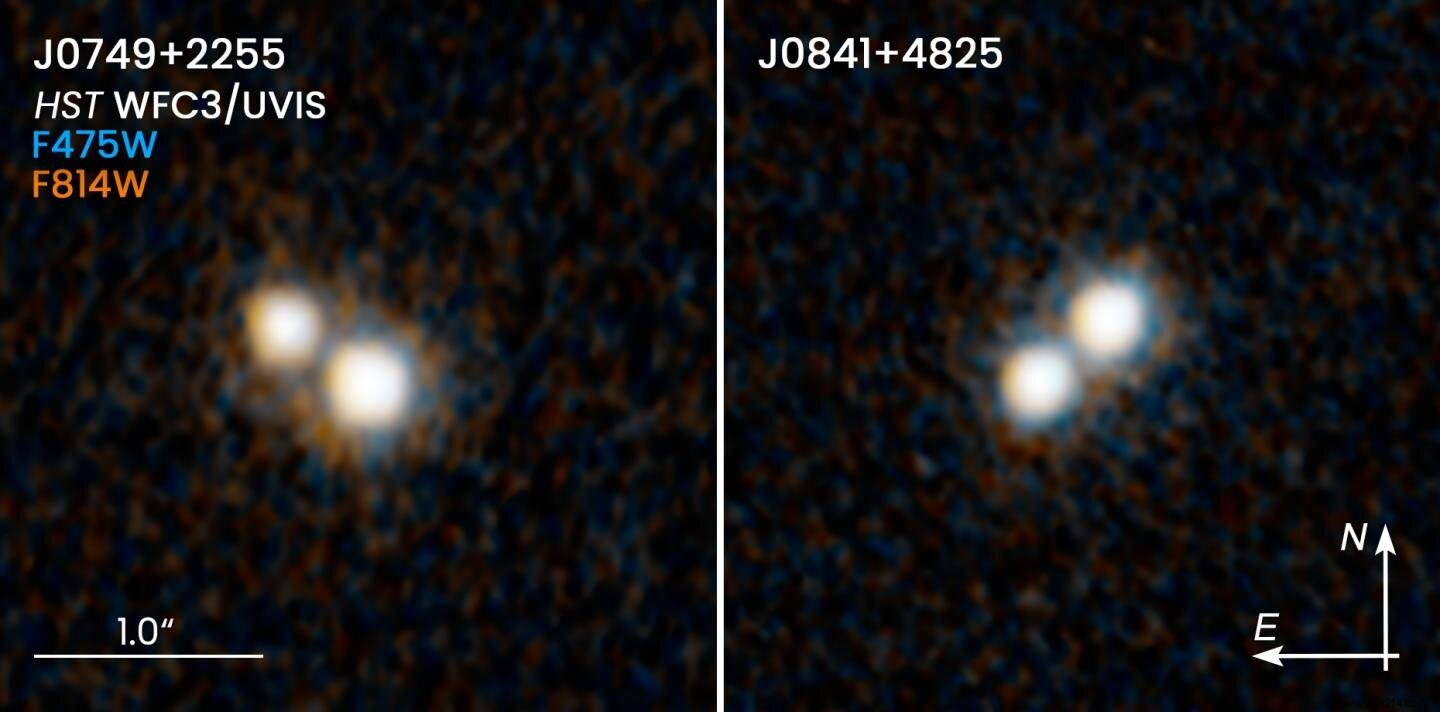Traveling back ten billion years in the past of the universe, Hubble came across two pairs of quasars very close to each other. Astronomers conjure up two needles in a cosmic haystack.
A quasar is a very energetic galaxy with a very voracious supermassive black hole at its center. The object, which ingests a lot of matter, then emits an insane amount of energy in the form of electromagnetic radiation and actually appears very bright. Quasars are thus presented as the brightest objects in the universe .
Sometimes two of these cosmic ogres will meet during a galaxy merger, forming a "double-quasar". Since these galactic mergers were more frequent several billion years ago, researchers point their telescopes this far to try to apprehend them. Nevertheless, this is not an easy task.
"We estimate that in the distant universe there is one double-quasar for every thousand quasars “, says Yue Shen, of the University of Illinois at Urbana-Champaign. "Finding these double quasars is like falling on a needle in a haystack “.
And precisely, a team recently came across one of these needles… and then a second. In reality, it was Hubble that spotted them, more than 10 billion light-years away . On the ground, these two pairs of quasars appeared as two simple points of light.
So far, astronomers have already identified about a hundred of these double objects in merging galaxies. However, none of them are as old as these two new discoveries .
This study, the results of which are published in the journal Nature Astronomy, will allow researchers to better understand the collisions between galaxies and the merger of their black holes in the early universe.
"This is the first sample of double-quasars evolving during the peak epoch of galaxy formation that we can rely on to probe how supermassive black holes come together to form binaries “, said Nadia Zakamska, of Johns Hopkins University in Baltimore, Maryland.
In turn, these mergers shape the structure of galaxies. As two nearby galaxies begin to gravitationally warp, their interaction funnels matter into their respective black holes, subsequently igniting their quasars.
Over time, the radiation from these giant "bulbs" propels powerful winds that sweep through the surrounding gas. Deprived of matter, star formation ceases and galaxies evolve into elliptical galaxies.

Although astronomers are convinced of these results, it is all the same according to them possible that these snapshots of Hubble are actually double images of the same quasars.
If so, they would be the work of gravitational lenses. As a reminder, these phenomena occur when the gravity of a massive foreground galaxy splits and amplifies the light of an object located in the background (quasars here) into two mirror images.
However, the researchers believe this scenario is highly unlikely , as Hubble detected no foreground galaxies near the two pairs of quasars.